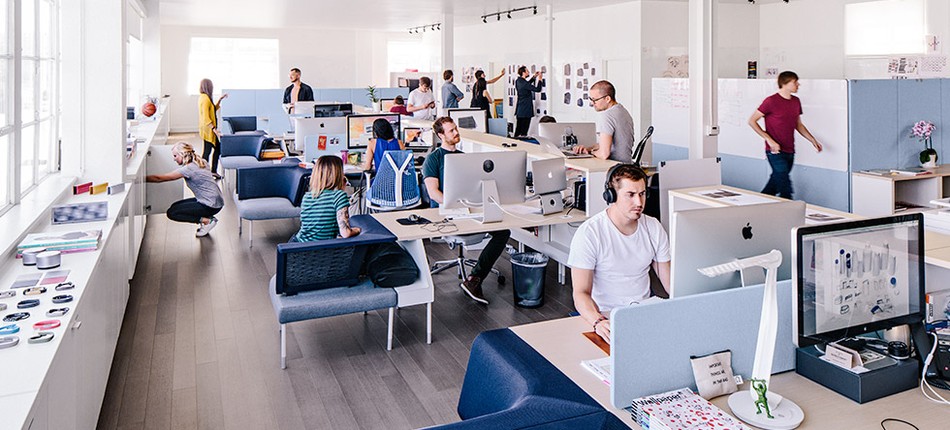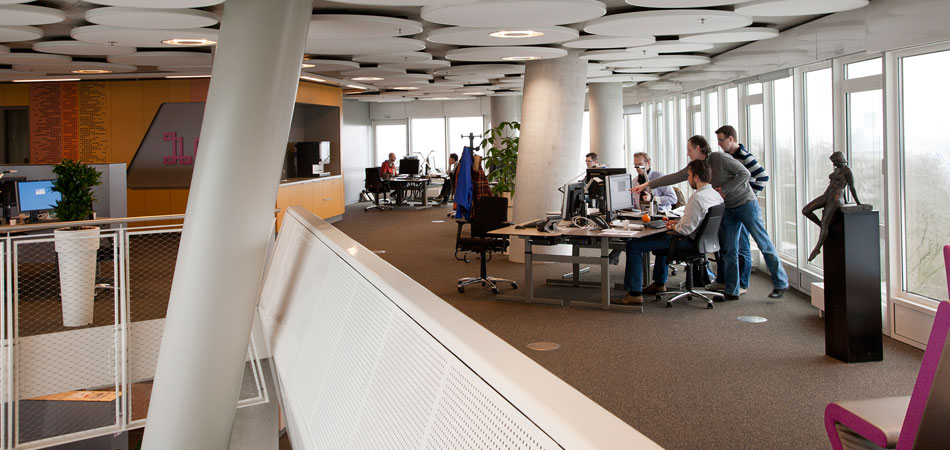
October 6, 2022 – There is no doubt that the architecture and design industry is booming. With new buildings and other projects popping up all over the country, the demand for talent is higher than ever. However, with a large percentage of the workforce leaving the industry during the pandemic, there is a significant gap in the supply of qualified workers.
The shortage has created a fierce hiring war, as companies are fighting to find and retain the best talent. With so many job openings and high demand, architects and designers can be picky about where they work. So, how can you make your firm stand out from the rest?
Here are a few tips:
– Offer competitive salaries and benefits.
– Provide opportunities for career growth.
– Offer a flexible work environment.
– supplement full-time with short-term staff to reduce work hours
– Thoughtfully designed workspace & brand
– Have a strong company culture
By offering competitive salaries, benefits, and opportunities for career growth, you will be able to attract the best talent to your firm. Additionally, having a solid company culture will help you retain that talent. So, make sure you are prepared to fight for the right talent!
ABOUT THE AUTHOR
After working at various design practices on a full-time and freelance basis and starting his design firm, David McFadden saw a gap to fill in the industry. In 1984, he created an expansive hub for architects and hiring firms to sync up, complete projects, and mutually benefit. That hub was Consulting For Architects Inc., which enabled architects to find meaningful design work while freeing hiring firms from tedious hiring-firing cycles. This departure from the traditional, more rigid style of employer-employee relations was just what the industry needed – flexibility and adaption to current work circumstances. David has successfully advised his clients and staff through the trials and tribulations of four recessions – the early ’80s, the early ’90s, the early 2000s, the Great Recession of 2007, and the Pandemic.

When I read an article titled “People are ‘ghosting’ at work, and it’s driving companies crazy” by Chip Cutter, LinkedIn Editor at Large, I flipped out because it is so true and it should be an eye-opener to hiring firms. I have added my own pointers as well.
Gone are the days where architects are waiting around for a phone call from a potential employer. In fact, it is the opposite. Candidates receive two, sometimes three offers of employment in a week’s time.
Excerpts from Chip’s article below:
Where once it was companies ignoring job applicants or snubbing candidates after interviews, the world has flipped. Candidates agree to job interviews and fail to show up, never saying more. Some accept jobs, only to not appear for the first day of work, no reason given, of course. Instead of formally quitting, enduring a potentially awkward conversation with a manager, some employees leave and never return. Bosses realize they’ve quit only after a series of unsuccessful attempts to reach them. The hiring process begins anew.
Among younger generations, ghosting has “almost become a new vocabulary” in which “no response is a response,” says Amanda Bradford, CEO and founder of The League, a dating app. Now, “that same behavior is happening in the job market,” says Bradford, who’s experienced it with engineering [architecture and design] candidates who ghosted her company.
Some of the behavior may stem not from malice, but inexperience. Professionals who entered the workforce a decade ago, during the height of the Great Recession, have never encountered a job market this strong. The unemployment rate is at an 18-year low. More open jobs exist than unemployed workers, the first time that’s happened since the Labor Dept. began keeping such records in 2000. The rate of professionals quitting their jobs hit a record level in March; among those who left their companies, almost two thirds voluntarily quit. Presented with multiple opportunities, professionals face a task some have rarely practiced: saying no to jobs.
“Candidates are winding up with multiple offers, and you can’t accept them all,” says Dawn Fay, district president at Robert Half International in New York. “Individuals just inherently don’t like conflict or disappointing people.”
Thus, ghosts. Interviews with more than a dozen hiring managers and recruiters across the U.S. suggest the practice is on the rise, forcing companies to rethink how they operate. END.
Top 6 changes hiring firms must make to compete for top talent:
1. Everyone wants Revit proficiency. Guess what; there is a major shortage. If the candidate meets most of your other requirements, then, intensive on-the-job Revit training is needed. Particularly, if they have AutoCAD or ArchiCAD skills.
2. If you believe the candidate has 85-90% of the skillset your job description requires, grab that candidate and don’t look back! How many people are currently employed at your firm that did not have all the skills they have now? Play the long game.
3. Do not prolong the process from receiving the resume, scheduling an interview and making an offer. Or else, a competitor will scoop the candidates right out from under you.
4. Cut down on the long hours. The trend has been Work/Life Balance, and it starts with more personal time. If you had a choice, would you pick a firm with a 60-hour work week or 40-hour work week. Not only do your employees burn out, their salaries are totally diluted.
5. The main motivators in switching firms are better compensation, growth potential, better corporate fit, recognition of skillset, better management and more interesting projects.
6. If you are designing single-family homes and the candidate has an array of educational projects, the tendency is to reject the candidate out of hand. But, the less flexible you are, the smaller the talent pool becomes. Why not give the candidate a chance? Mentor h/her; a good architect can learn new building types. And besides, architects do not want to be pigeon-holed. They want new career opportunities. And besides architects do not want to be pigeon-holed. They want new career opportunities.
Not made these fundamental changes? Then you are losing top talent to your competitors.

First, make an architecture or interior-design independent contractor into an employee by formalizing the person’s work arrangement and paying him or her regular wages. The IRS and its interpretation of payment and work plays the most important role in deciding a person’s status. At our staffing firm for architects and designers converting a independent contractor to a full-time employee is a third of our business.
Characteristics of an independent contractor
The IRS views an independent contractor as a person who works apart from the firm, and the rules governing them are not extremely clear cut. This wide room for interpretation has led to disputes in a number of workplaces. Fortunately, the status of an independent contractor is not as ambiguous as that of intern architect or draftsman.
By definition, an independent contractor is a person who has a significant amount of control over his or her work, achieves goals independently from the firm, doesn’t need to adhere to all the firm’s rules, uses his or her own equipment and doesn’t require close supervision by a member of the firm.
Characteristics of an employee
An employee must follow the set rules of the firm. He or she receives payment through a W-2 rather than a 1099 form. An employee uses the firm’s equipment to complete jobs, has a title with the firm and is subject to supervision by a member of the firm.
The transformation from contractors into employees
4 Key Points
- A person’s status changes when the firm takes them under its wing. Typically, this process involves the following aspects: training, giving the person authority to make decisions for the business, assigning the person key duties to perform and redefining the person’s work status as permanent, off-probation or retained for a set period of time. The process is complete when the new employee understands their work responsibilities and begins a project on behalf of the firm.
- It is critical that the person understand what it means when he or she has become an agent of the firm. The best way to accomplish this task is in writing. The new architect or interior designer and the owner of the firm should sign a letter of agreement stating the worker is now an employee.
- You can ratify and celebrate the change in a person’s status by providing them with business cards that state their title and contact information. Having a letter signed and dated by the owner that contains a start date is also helpful and thoughtful for those changing from independent contractors into employees.
- Finally, it is meaningful for the firm to circulate an internal announcement that they have hired the independent contractor as a full-time employee.
Source list:
http://www.cons4arch.com/
http://www.aia.org/akr/Resources/Documents/AIAB095064
https://www.mbopartners.com/resources/article/what-is-independent-consulting











